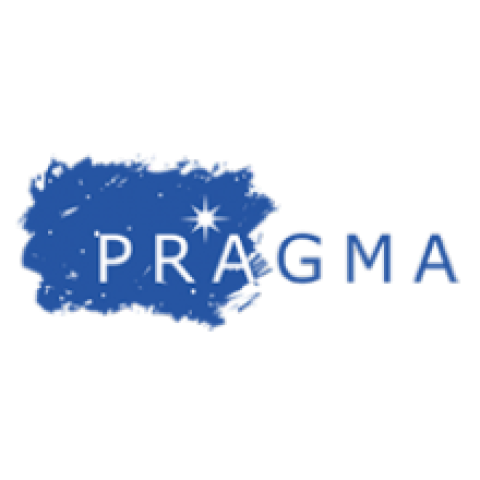The SALI Alliance Releases Second Major Version of the Legal Matter Specification Standard
The Standards Advancement for the Legal Industry (SALI)Alliance is pleased to announce the official release of Legal Matter Specification Standard (LMSS) 2.0. This new, dramatically expanded version of the LMSS represents an important milestone for the industry just over two years after the issuance of the well-received LMSS 1.0. The taxonomy has expanded more than six-fold to almost 10,000 categories (essentially tags) that the legal market uses to describe its services in detail, and in a way that is comparable across organizations. Those ~10,000 tags can fuel legal pricing, AI, and data-science initiatives.
“LMSS 2.0 is, quite simply, innovation in the legal industry at its finest. It is the culmination of countless hours generously volunteered by professionals in law firms, technology companies, service providers, educational institutions, and clients in different roles, pursuing the same vision,” notes Toby Brown, co-founder of The SALI Alliance and Chief Practice Management Officer at Perkins Coie. “A common language for the legal industry is powerful for all of these parties, from legal operations to business development, pricing, knowledge management, and overall law firm business operations. Standardized data is critical to all of these efforts.”
A significant portion of the expanded set of descriptors relate to litigation, including causes of action, document types, phases, and more, enabling robust definition and categorization of a wide variety of key aspects of disputes. Damien Riehl, Fastcase Vice President of Litigation Workflow and Analytics Content, also a former practicing lawyer and coder, drove the development of these components of the standard. In addition, Riehl led an effort to migrate the LMSS to a graph database (RDF/OWL) hosted by Stanford University’s WebProtege.
Many organizations are moving from relational databases (e.g., SQL) to graph databases (e.g., knowledge graphs, Neo4j) as a superior means of describing and managing how information is interrelated. A graph allows industry players to browse the data and also see how descriptors, data points and concepts relate to one another. But even if organizations are not (yet) using graph systems, their relational-database systems can still get the full benefit of SALI LMSS 2.0 and its richer, more-detailed descriptors and relationships.
“I was delighted to bring my experience as a lawyer and technologist to build out the standard, in substance, function, and presentation,” said Riehl. “The value of the standard is truly unlocked when you see how each attribute works in concert with others in a graph, and Stanford’s interface, WebProtege, demonstrates those relationships simply and elegantly.”
Beyond the move to a graph, key enhancements in LMSS 2.0 include Engagement Terms to define a matter’s business arrangement, Events to identify key milestones in a matter, hundreds of new state court codes, customization based on Canadian law, and mapping to other widely used industry standards, including UTBMS and PACER nature of suit.
The release of LMSS 2.0 follows increasing momentum and interest in the standard from parties across the legal industry ecosystem, including law firms, service providers, educational institutions, and in-house teams. Reference implementations reflect the diversity of interest, from early-adopter law firm Goulston & Storrs PC, to the Attorneys’ Liability Assurance Society (ALAS), to technology company Fastcase’s subsidiaries NextChapter and Docket Alarm.
Membership and endorsements are increasing at a rapid pace for The SALI Alliance as well. In 2021, new members and endorsers include the Corporate Legal Operations Consortium (CLOC), Bond, Schoeneck & King, Coblentz Patch Duffy & Bass LLP, Courtroom Insights, Fredrikson & Byron, NetDocuments, Ogletree Deakins, OpenText, Sheppard Mullin and Sidley Austin.
Technical Advances in LMSS 2.0
The rapid expansion of the standard necessitated the creation of unique identifiers for each of the nearly 10,000 nodes. Known as IRIs, these unique, machine-readable codes accomplish several objectives critical to the flexibility and scalability of the LMSS. The IRIs replace humanreadable codes that were US-centric. Corporate Law, for example, was represented as “CORP” in LMSS 1.0. As more languages and country-specific nuances are incorporated into the LMSS, use of IRIs will allow for infinite permutations and eliminate concerns over translating the codes. “CORP,” for example, is meaningless in many of the worldwide languages expected to be represented in the LMSS over time.
The unique identifiers are also designed for greater efficiency in machine reading of the codes. As the SALI Alliance moves toward releasing an open application programming interface (API), and technology companies from Fastcase to Intapp are beginning to incorporate the standard into out-of-the-box products, the IRIs facilitate rapid integration of systems, including, ultimately, between law firms and clients.
About The SALI Alliance
The Standards Advancement for the Legal Industry (SALI) Alliance is an independent not-forprofit, member organization that was formally established on May 15, 2017, with the goal of producing standards for the legal industry to accelerate innovation and improve efficiency. The SALI Alliance includes a wide range of stakeholders including law firms, companies, service providers and legal industry associations. Its founding members are the Association of Legal Administrators, the International Legal Technology Association and the Legal Marketing Association. Learn more at www.sali.org.
Do you want more information?
 Pragma International
Pragma InternationalPragma is an international network of law firms established in January 2001.

